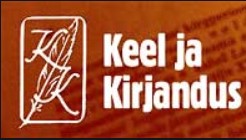Kelle ees ja mille taga? Ruumis orienteerumise viisid eesti keeles
In front of someone and behind something? Spatial frames of reference in Estonian
Author(s): Ann VeismannSubject(s): Morphology, Semantics, Finno-Ugrian studies
Published by: SA Kultuurileht
Keywords: semantics; adpositions; spatial language; frames of reference; front-back;
Summary/Abstract: Languages differ in how they encode spatial frames of reference. The article examines Estonian postpositions which denote front and back relations: ette ‘in front of [illative]’, ees ‘in front of [inessive]’, taha ‘to the back’, taga ‘back, behind’, tagant ‘from behind’. The goal of the study was to discover systematic patterns in how the reference frames are used to locate spatial entities (ground objects) in the front-back dimension in Estonian. The study is corpus-based, the data coming from the Estonian National Corpus 2017 (1,107,584,469 words), collected via Sketch Engine (Kilgarriff et al. 2004). According to the most salient spatial collocations of the adpositions under investigation, the intrinsic frame of reference is chiefly used when the ground object is animate (humans, collectives) or can move (vehicles). This finding is consistent with that of Levinson (2003), who states that functions of (body)parts and direction of motion are amongst the typical means of discerning front-back asymmetry. Functional orientation may also bestow facets on inanimate objects (e.g. the fronts of buildings and of furniture).If the ground object lacks inherent facets, the relative (egocentric) frame of reference is used. There are many natural objects that lack inherent orientation, such as trees, forests, stones, mountains, and also buildings and their constituent parts (e.g. doors, windows, gates, walls). The relative frame of reference typically maps the observer’s own axes onto the ground object by assigning a front to the ground object, as though the object was facing the observer (“facing strategy” (Hill 1982)). There are some cases found in the Estonian data where the axes are not mapped according to this facing strategy, but according to the aligned strategy; these exceptions can be explained by the particular features of the ground object (e.g. the observer and ground object are both on the move; or the ground object is relatively small). However, in some cases, it seems that a kind of fixed or conventional viewpoint is adopted (e.g. trellide taga ‘behind bars’, joone taga ‘behind the line’).
Journal: Keel ja Kirjandus
- Issue Year: LXIII/2020
- Issue No: 8-9
- Page Range: 737-756
- Page Count: 20
- Language: Estonian

